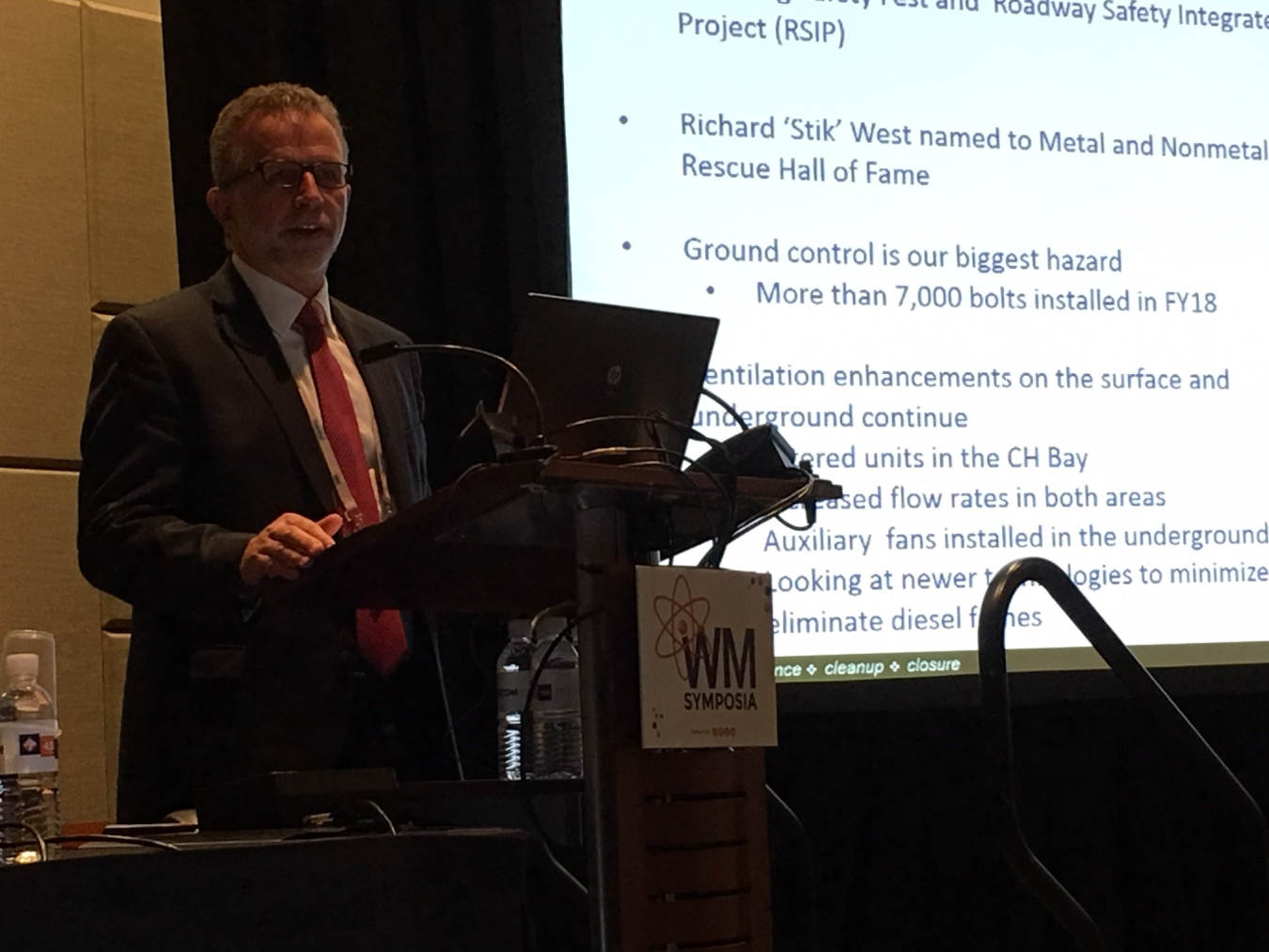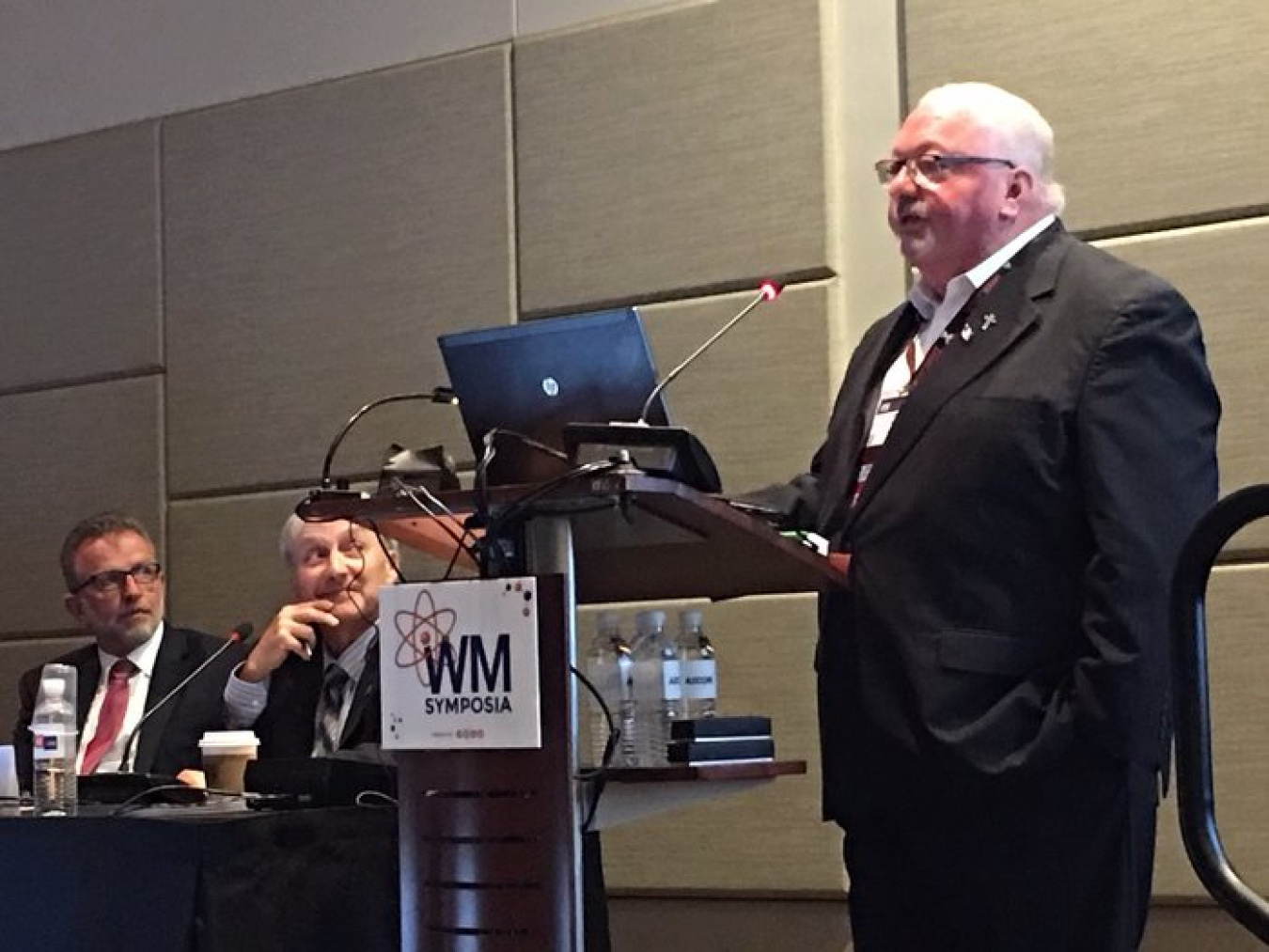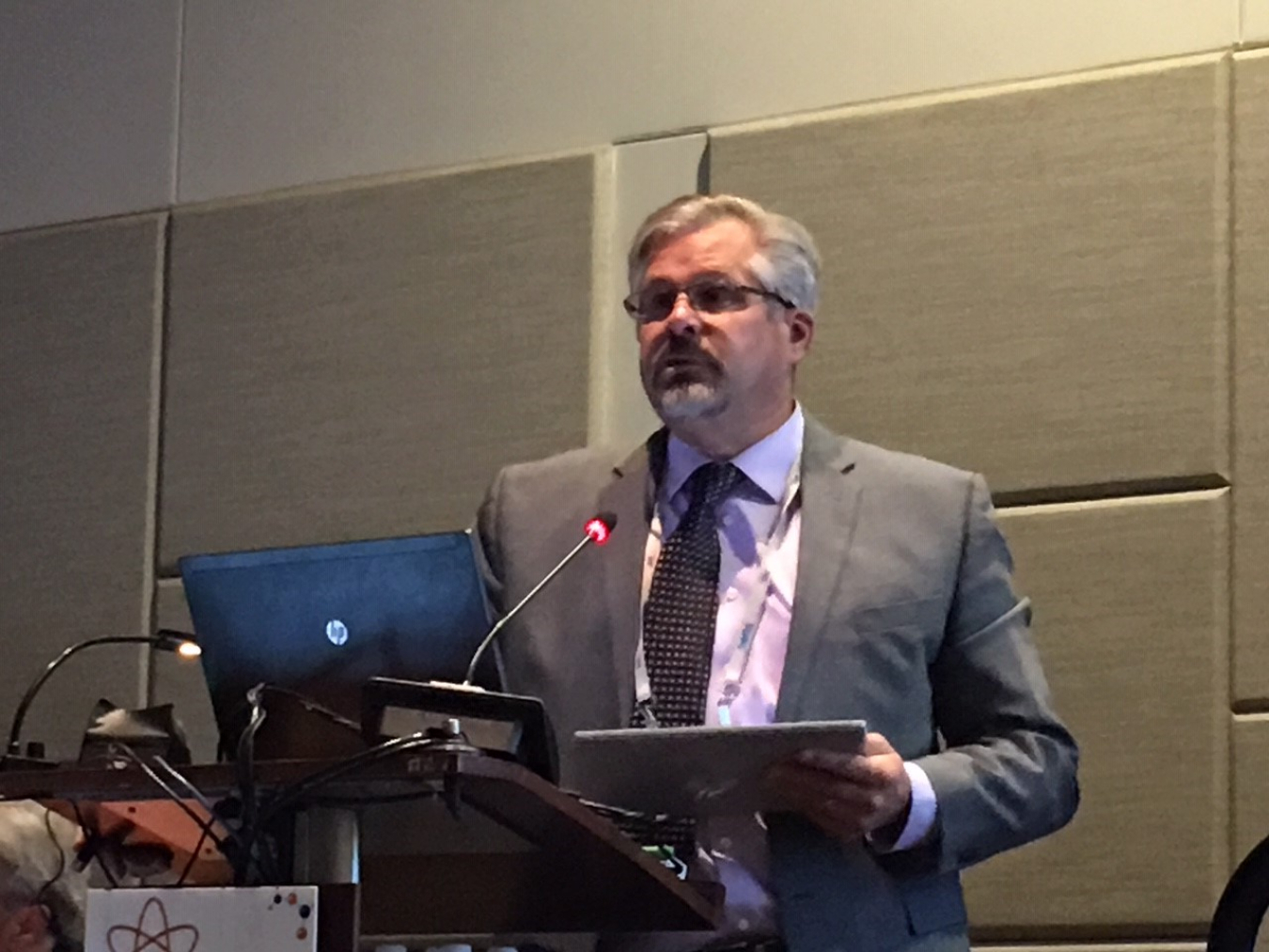The Waste Isolation Pilot Plant, celebrates its 20th anniversary on March 26 and continues to be a critical part of DOE environmental cleanup strategy
Office of Environmental Management
March 12, 2019PHOENIX – The Waste Isolation Pilot Plant, or WIPP, celebrates its 20th anniversary on March 26 and continues to be a critical part of DOE environmental cleanup strategy, speakers emphasized during the 2019 Waste Management Symposia.

According to Bruce Covert, President and Project Manager for Nuclear Waste Partnership, WIPP is focused on the next phase of site operations. Members of the panel titled “WIPP – Future Plans for the Utilization of a National Asset,” discussed key activities including plans for a new ventilation system and utility shaft, infrastructure improvements to extend WIPP’s operational life, regulatory activities, and the continued characterization and certification requirements at generator sites to ensure shipments continue.

J.R. Stroble, Carlsbad Field Office (CBFO) Director of Business Operations, talked about recent accomplishments including ramped-up activities for TRUPACT-III shipments from Savannah River Site, and recent shipment from Argonne National Laboratory using shielded containers.
A second WIPP-related panel titled “TRU Waste Generator Sites – Implementation of the New WIPP Waste Acceptance Criteria (WAC),” provided additional details of the challenges at TRU waste generator sites including the new Basis of Knowledge requirement sites must meet before they can characterize and certify waste for disposal at WIPP.
Ken Princen, CBFO Assistant Manager of the National Transuranic Program, highlighted different scenarios for the next 10 years and beyond, specifically related to TRU waste streams. Princen also discussed waste packaging alternatives for remote-handled TRU waste including shielded containers, which are expected to become more cost effective when used with greater waste volumes

Mark Pearcy, National Transuranic Program Manager for Nuclear Waste Partnership, gave an overview of revision 9 to the WIPP Waste Acceptance Criteria.
CBFO Institutional Affairs Manager James Mason provided a presentation about stakeholder outreach and collaboration with elected officials and stakeholders to select transportation routes. He also talked about cooperative assistance provided along routes including staff augmentation, training, exercise planning, and equipment.

